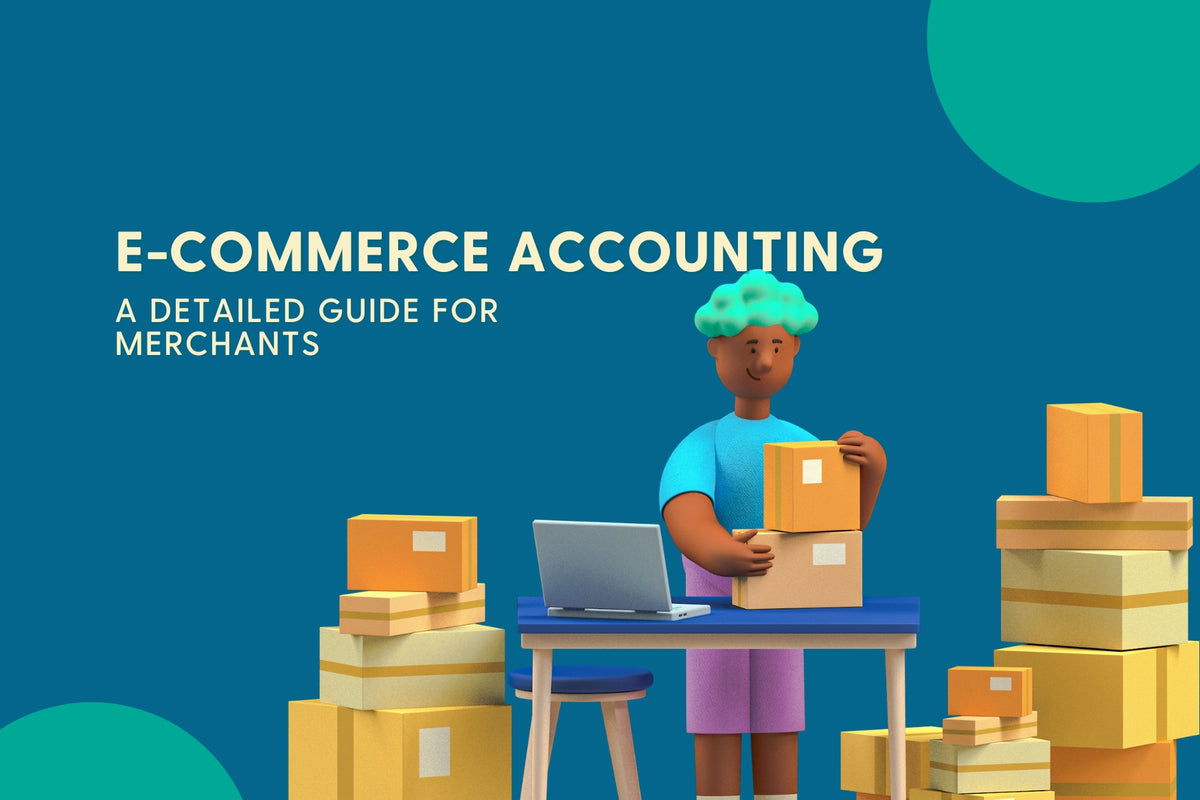ADA compliance for Shopify stores is an important part of becoming a legitimate and respected business. You might be wondering what ADA compliance is or how it’s relevant to eCommerce. Fear not, this article will explain everything, including a full breakdown of ADA compliance and what it means for eCommerce.

Websites are now increasingly viewed as spaces of public accommodation, making ADA compliance necessary.
What is ADA compliance?
The federal Americans with Disabilities Act (1990) requires physical and online businesses to put measures in place to improve accessibility for people with disabilities.
An example of ADA compliance for a brick and mortar store would be installing a wheelchair ramp, or using braille on buttons.
Shopify stores may also need to comply with the ADA, although there is no official law governing website accessibility yet. Still, courts generally point to the Web Content Accessibility Guidelines (WCAG) to hold online stores accountable to ADA standards.
The Americans with Disabilities Act is a strict liability law, meaning there are no excuses for non-compliance. You can’t just turn around and say your developer is working on it. Fines could exceed $75,000.
What is WCAG?
Web Content Accessibility Guidelines are not legally binding. Still, they can be used by the courts to penalize websites that don’t meet ADA standards.
WCAG is a great reference to ensure your website is meeting the minimum requirements for accessibility. There are three parts to WCAG: 1.0, the current 2.0, and an extension 2.1. There are three ratings within WCAG 2.0, these are:
- A: Minimum accessibility requirements met.
- AA: Recommended requirements that comply with ADA.
- AAA: Exceeding expectations.

Some ways to improve website accessibility aren’t immediately obvious to people without disabilities.
Courts routinely refer to WCAG 2.0 AA as the standard metric for measuring a website’s accessibility level. This is what you should be aiming for.
Basically, this means your website needs to be easy to understand, reliable across various devices, with clear and simple navigation, and with support for screen reading. Simples.
But does your eCommerce store have a legal requirement to conform to WCAG and ADA standards? Let’s look into that next.
Who needs to follow ADA compliance standards?
Any business in the United States that operates 20 or more weeks of the year and has 15 or more employees is legally required to be ADA compliant.
Also, any ‘tier III’ business, which means any business that is considered “public accommodation” must also be ADA compliant.
This actually means that a lot of eCommerce websites don’t have to be ADA compliant, but it’s still beneficial to try and meet the standards outlined by the WCAG guidelines. It’s good for your brand and it helps customers with disabilities navigate your store.
It’s estimated that 26% of Americans live with a disability, so meeting WCAG standards online shouldn’t be a mere afterthought. This is something that will affect your customers.
Let’s have a deeper look at ADA compliance and what it means for eCommerce stores.
How is ADA compliance relevant to eCommerce stores?
ADA was written and passed in 1990, so it doesn’t actually mention websites because they didn’t exist in the public mind back then.
As we’ve already mentioned, a lot of eCommerce stores aren’t legally required to follow ADA standards because they have less than 15 employees and they’re not “spaces of public accommodation”.
So what does ADA compliance mean for eCommerce?
Well, with more than a quarter of Americans living with a disability, it goes without saying that making your website accessible will improve your customer experience. It also shows that your brand has basic human empathy.

Websites are gateways for attaining products and services. They should be accessible to everyone.
Websites have been taken to US courts for being inaccessible
Winn-Dixie Supermarkets was found to be non-ADA compliant in court due to not having a screen-reader and thus being inaccessible for the legally blind.
The court rejected the idea that a website can never be a place of public accommodation because the site is a gateway for the hundreds of Winn-Dixie stores around the US.
This shows that courts are now changing their mindset to include the digital space in their idea of “spaces of public accommodation.”
In other words, it’s worth making your eCommerce store ADA compliant by conforming to WCAG 2.0 AA standards. By doing so, you’re future-proofing your online store against changes to ADA laws and you’re helping the millions of potential customers who might want to buy from you reach the checkout page.
So, we’ve gathered that eCommerce stores should be accessible to people with disabilities. Now, how on earth do you make your Shopify store ADA compliant?
How to make your Shopify store ADA compliant
Making your store on Shopify ADA compliant isn’t too difficult. In fact, it’s very much tied in with making a good user experience (UX) in general.
Here are some simple and effective ways to make your Shopify store ADA compliant.

The gov.uk site is a shining example of what an ADA compliant public website looks like.
1) Ensure text is understandable
This doesn’t just mean ensuring your writing is easy to comprehend, it means using a font that is easy to read, and ensuring the color of text contrasts with the background. Here are some tips for making your text easy to read:
- Use consistent spacing. Make your text ‘left-aligned’ so the spaces between words are all the same size. This makes your text easier to read.
- Use a large enough font size. Make sure the text on your pages is big enough for anyone to read.
- Make sure the text contrasts with the background. You can use a contrast suggestion tool to find colors that stand out from one another. The easiest option is black and white.
- Ensure text links are different from regular text. Underline of bold your hyperlinks to ensure people who are colorblind can still recognize them. It’s not enough to simply make them a different color.
- Test it out. Use a screen reader tool to test that your text is easily picked up by tools for the visually impaired. You can also get a person with a disability to look through your website and give you feedback to make it easier to understand.
2) Use ‘alt text’ on all your images
Visually impaired users rely on tools like screen readers that convert text to voice. You need to make sure that your website can be easily read by this software - and that includes any images.
Give an alt text to all images so they can be read by the screen reader. The best way to do this is to imagine you’re describing the image to someone with their eyes closed. You want to really allow the person to visualize the image.
Not only do alt descriptions help visually impaired people, but they’re also great for the SEO value of your site.

Don’t auto-play videos on your website to ensure text-to-speech software isn’t interrupted.
3) Mute your videos - and transcribe them
Make sure your videos and audio elements don’t autoplay, or if they do, have them play on mute. This ensures the audio doesn’t drown out the screen reader.
You should also make transcriptions of all your videos so they can read by a screen reader. On top of that, ensure that closed captions are activated so people with hearing impediments can understand them.
Videos should be fully visible without anything cluttering them to ensure the closed captions are always visible.
4) Make sure the apps you install are ADA compliant
We mentioned earlier that you shouldn’t install third-party widgets that ‘make your store ADA compliant’. This is because those widgets likely won’t stand up in a legal setting. Still, try to ensure the apps you install for other purposes are ADA compliant.
Let’s look at some examples.
Boost Product Filter & Search
Boost Commerce is ADA compliant in a number of ways. The site search app has proper aria-labels to ensure everything can be picked up by a screen reader - something that is very useful in a search bar. It also uses proper HTML structure to ensure screen readers know what language the page is in and so forth. The app also uses accessible keyboard navigation.
Using Narrator on Windows or VoiceOver on MacOS, you can check the ADA/WCAG support on demo website of Boost Commerce.
Accessibility
The Accessibility app allows you to make your site more compliant with ADA and WCAG 2.0. It’s important that you don’t just rely on this, but it can’t help to have a couple of accessibility tools installed on your Shopify store. The app helps to:
- Make content easier to read.
- Enable text to voice.
- Make hyperlinks more noticeable.
- Add alt tags automatically.
- Adjust colors to make content stand out more.
Using apps that are ADA compliant will help your store to become more accessible. Using tools to adjust your content and make it easier to read will also help your store to be more ADA compliant.
5) Contrast colors to make reading easier
Ensure your color scheme is accessible to the colorblind and otherwise visually impaired. You can use a contrast ratio tool to see how well your site content contrasts. You can also use a color contrast list to see which colors pair well together to make your content easier to read.
You could just take the simple route and use black and white. But you should make sure colors contrast well if you want to get a little more adventurous.
ADA scams to avoid online
Unfortunately, the world is full of opportunists who’ll take money from you without good reason. ADA compliance leaves a market for website audits, widgets, and tools, most of which are useless and won’t protect your site in the event of a proper government audit.
Common scams include:
- Expensive audits - sometimes in the thousands of dollars - that simply use free tools to scan your website then present the results in a fancy-looking report. Take the time to find the right tools to check your site and consider hiring the services of a disability lawyer if you really want to ensure your Shopify store is ADA compliant.
- Marketing agencies that claim they understand ADA compliance and seek to boost revenue. Many of these agencies will simply throw in ADA compliance as an add-on to get more money out of you when, in reality, they don’t know enough to properly audit your website.
- Useless widgets and tools cost a lot of money but don’t provide any real value to your site. Many of these tools offer expensive features that you could easily sort out yourself.
Don’t fall prey to scams online claiming they can prevent costly lawsuits. Hire a disability lawyer to audit your website if you really want to spend money on ensuring you’re ADA compliant. This will also give you much more legal clout in the event you ever were taken to court.
Final thoughts
ADA compliance is not something you should just leave as an afterthought. The perception of websites as spaces of public accommodation is now growing. People use websites as gateways to services and, increasingly, as their default means of buying products of all varieties.
Around one in four Americans are living with a disability, many of whom have visual and hearing impediments. It’s not difficult or taxing to make your Shopify store easier to navigate for these people.



